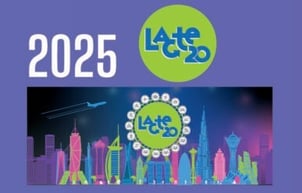There was a time — not that long ago — when offering interpretation at events felt like a gesture of generosity. Something above and beyond. Now? In 2025, it's fast becoming the baseline.
Part of that shift has to do with legislation. But it’s also about what audiences expect. They’re joining from dozens of countries, tuning in on different devices, and increasingly, they’re asking: Can I actually follow this in my own language?
Accessibility Is No Longer a Footnote
The timing isn't a coincidence. This year, the European Accessibility Act (EAA) kicked in — bringing new expectations (and consequences) for how organisations deliver digital services, including virtual and hybrid events.
If you’ve been working in events or communications, you’ve probably heard the acronym tossed around for months now. But the reality is settling in: accessibility now includes real-time language support.
Live captions. Real-time translation. Subtitles delivered straight to someone’s mobile phone. These are no longer just extras — they’re rapidly becoming requirements.
The Livestream Wake-Up Call
It’s not just conferences or webinars anymore. Think bigger. Think televised award shows, high-profile panel discussions, keynote presentations reaching thousands online. Take the European Film Awards last year. Attendees were able to scan a QR code and instantly access live captions on their smartphones in multiple languages. No difficult configuration, no login — just clean, instant access to the content. For some in the audience, this wasn’t just helpful — it was the only way to follow what was being said.
And that’s exactly the point. Real-time language access is no longer a favour. It’s a foundation.
AI Speech Translation Is Good. But Not Perfect.
While the tech is improving quickly, it’s not flawless. There are issues with accuracy, tone, and technical vocabulary — especially in high-stakes environments like investor calls or legal summits. That’s why many organisations still rely on live interpreters for critical sessions, sometimes blending AI with human expertise for the best of both worlds.
It’s not a question of one replacing the other. It’s about finding balance — and recognising where quality still matters.
Hybrid Events Just Raised the Bar
For event organisers, hybrid formats have opened up the world — but they’ve also introduced complexity. When you’re dealing with physical audiences, remote viewers, multiple languages, and varied levels of tech-savviness, things can get messy fast.
What’s working right now? Simplicity.
Instead of distributing headsets or building interpreter booths, more organisers are turning to QR code captioning and browser-based interpretation tools. It’s easy for the user, and it’s scalable on the backend.
At Interprefy, this has become almost standard in large-scale global events — from tech summits to institutional conferences.
You might not even realise it’s happening. But behind the scenes, language access is making those hybrid experiences work.
Inside the Organisation, the Same Rules Apply
It’s easy to focus on what your customers or attendees need — but what about your team?
Multinational companies often operate in English, but that doesn’t mean everyone’s on the same page. Leadership updates, strategy rollouts, and internal Q&As are some of the most important moments in company culture. When people don’t understand what’s being said, the results are subtle but significant: disengagement, confusion, missed context.
A Harvard Business Review study confirmed this: when employees hear information in their native language, they’re more likely to trust it — and act on it. Language access isn’t just about compliance. It’s about alignment.
What This Means for the Months Ahead
There’s a quiet but important shift happening across the industry. Accessibility, once treated as a technical checklist item, is now being discussed at the strategy table. The European Accessibility Act may be the spark, but the momentum is global. In the U.S., the Department of Justice recently released new rules on accessible digital experiences. In Asia and Latin America, organisers are responding to multilingual audience demand not just to meet requirements — but to widen reach.
Ultimately, events are about connection. And connection doesn’t happen unless everyone can understand what’s being said.
So what to take away from this?
Language inclusion isn't a future goal — it’s a present-day expectation.
And while the tools are evolving quickly, it’s how you use them that really counts.
Whether you’re organising a conference, hosting an all-hands, or live-streaming your next big announcement, the message is clear:
If you want to be heard, speak their language.





 More download links
More download links



